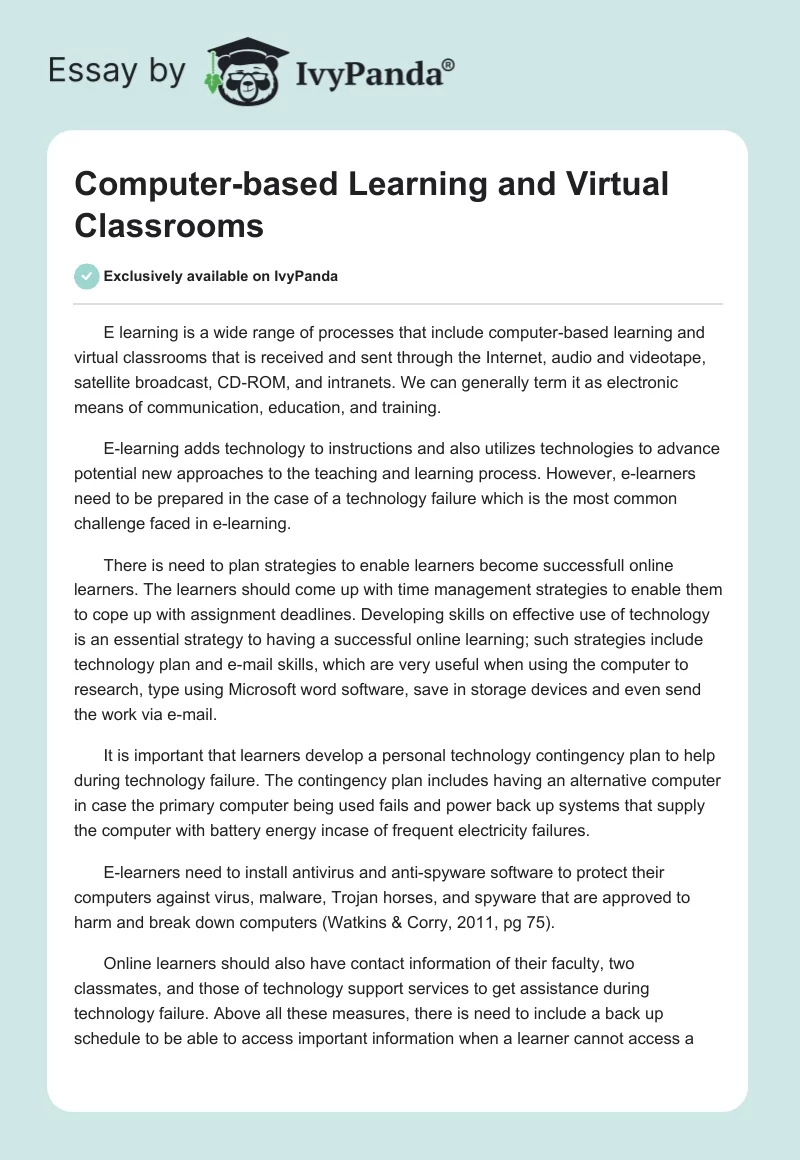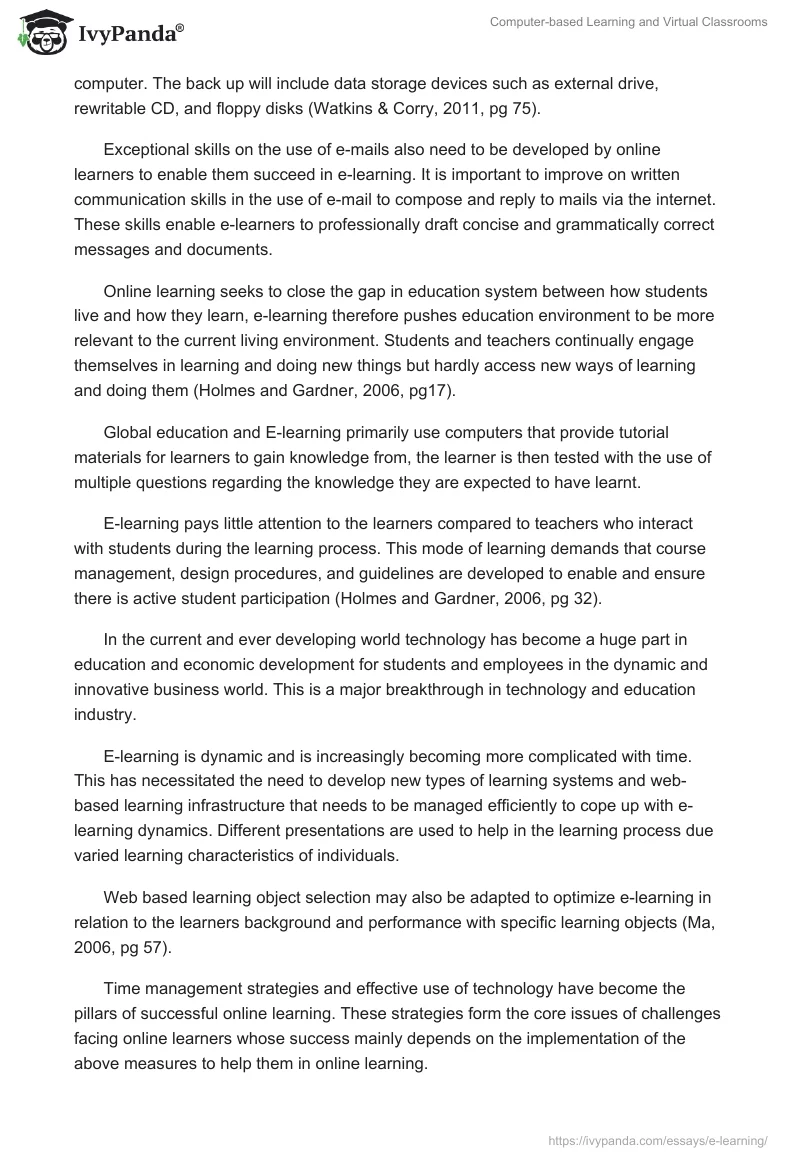E learning is a wide range of processes that include computer-based learning and virtual classrooms that is received and sent through the Internet, audio and videotape, satellite broadcast, CD-ROM, and intranets. We can generally term it as electronic means of communication, education, and training.
E-learning adds technology to instructions and also utilizes technologies to advance potential new approaches to the teaching and learning process. However, e-learners need to be prepared in the case of a technology failure which is the most common challenge faced in e-learning.
There is need to plan strategies to enable learners become successful online learners. The learners should come up with time management strategies to enable them to cope up with assignment deadlines. Developing skills on effective use of technology is an essential strategy to having a successful online learning; such strategies include technology plan and e-mail skills, which are very useful when using the computer to research, type using Microsoft word software, save in storage devices and even send the work via e-mail.
It is important that learners develop a personal technology contingency plan to help during technology failure. The contingency plan includes having an alternative computer in case the primary computer being used fails and power back up systems that supply the computer with battery energy incase of frequent electricity failures.
E-learners need to install antivirus and anti-spyware software to protect their computers against virus, malware, Trojan horses, and spyware that are approved to harm and break down computers (Watkins & Corry, 2011, pg 75).
Online learners should also have contact information of their faculty, two classmates, and those of technology support services to get assistance during technology failure. Above all these measures, there is need to include a back up schedule to be able to access important information when a learner cannot access a computer. The back up will include data storage devices such as external drive, rewritable CD, and floppy disks (Watkins & Corry, 2011, pg 75).
Exceptional skills on the use of e-mails also need to be developed by online learners to enable them succeed in e-learning. It is important to improve on written communication skills in the use of e-mail to compose and reply to mails via the internet. These skills enable e-learners to professionally draft concise and grammatically correct messages and documents.
Online learning seeks to close the gap in education system between how students live and how they learn, e-learning therefore pushes education environment to be more relevant to the current living environment. Students and teachers continually engage themselves in learning and doing new things but hardly access new ways of learning and doing them (Holmes and Gardner, 2006, pg 17).
Global education and E-learning primarily use computers that provide tutorial materials for learners to gain knowledge from, the learner is then tested with the use of multiple questions regarding the knowledge they are expected to have learnt.
E-learning pays little attention to the learners compared to teachers who interact with students during the learning process. This mode of learning demands that course management, design procedures, and guidelines are developed to enable and ensure there is active student participation (Holmes and Gardner, 2006, pg 32).
In the current and ever developing world technology has become a huge part in education and economic development for students and employees in the dynamic and innovative business world. This is a major breakthrough in technology and education industry.
E-learning is dynamic and is increasingly becoming more complicated with time. This has necessitated the need to develop new types of learning systems and web-based learning infrastructure that needs to be managed efficiently to cope up with e-learning dynamics. Different presentations are used to help in the learning process due varied learning characteristics of individuals.
Web based learning object selection may also be adapted to optimize e-learning in relation to the learners background and performance with specific learning objects (Ma, 2006, pg 57).
Time management strategies and effective use of technology have become the pillars of successful online learning. These strategies form the core issues of challenges facing online learners whose success mainly depends on the implementation of the above measures to help them in online learning.
References
Holmes, B. and Gardner, J. (2006). E-learning concepts and practice. NY: Pine Forge Press.
Ma, Z. (2006). Web based intelligent e-Learning systems: Technologies and applications. PA: Idea group inc.
Watkins, R., and Corry, M. (2011). E-learning companion: A student’s guide to online success. OH: Cengage Learning.


